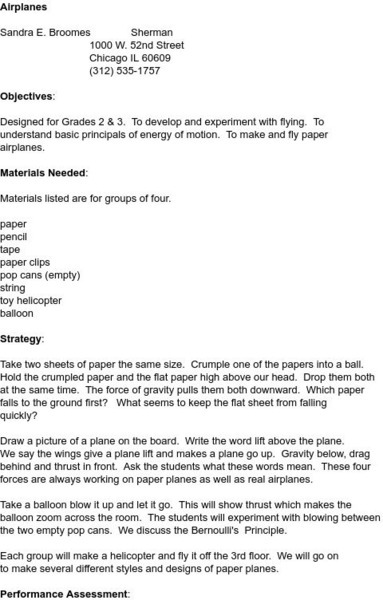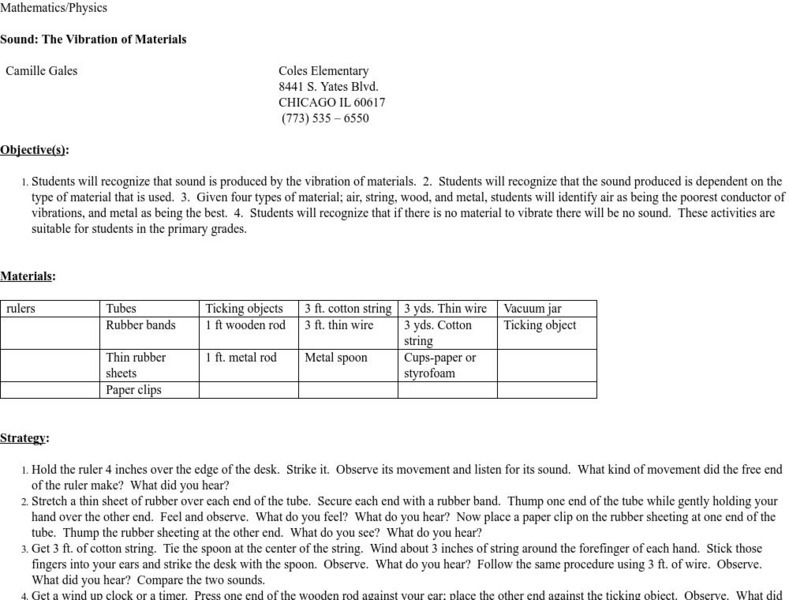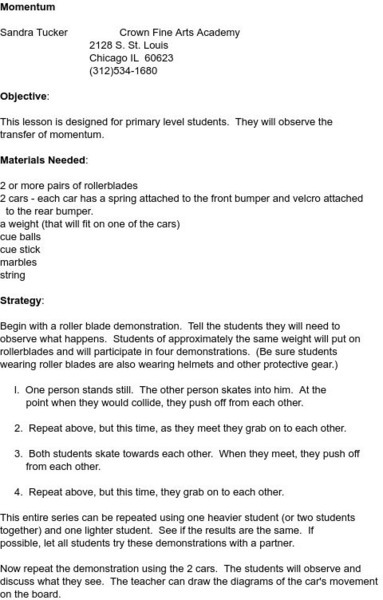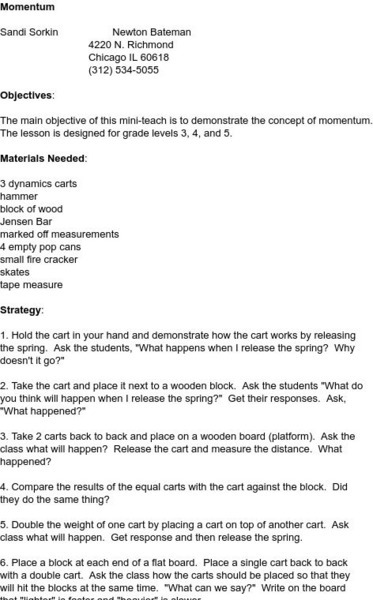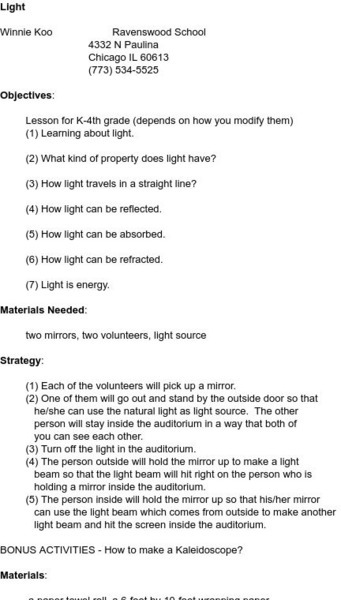Hi, what do you want to do?
Other
Colts Neck Township Schools: Hands on Technology: Solids, Liquids, and Gases
Printable classroom-ready worksheets for a series of simple-to-implement experiments about the states of matter.
Science and Mathematics Initiative for Learning Enhancement (SMILE)
Smile: Newton's Laws of Motion
Lesson plan from the Illinois Institute of Technology that incorporates many demonstrations like pulling a tablecloth from under a place setting, or launching a rocket to show Newton's laws.
Science and Mathematics Initiative for Learning Enhancement (SMILE)
Smile: Lab Activity: Aviation
This site from the Illinois Institute of Technology provides a student lab activity in which the flight of a paper airplane is investigated and studied. Designed for primary grades, but easily adaptable for junior high students.
Science and Mathematics Initiative for Learning Enhancement (SMILE)
Smile: Airplanes (2 3)
This paper airplane lesson plan helps students learn about certain concepts like air resistance, motion, and aerodynamics.
Science and Mathematics Initiative for Learning Enhancement (SMILE)
Smile: Electromagnets (Grades 3 and 4)
This lesson helps students to understand the difference between magenets and electromagnets. They will also create an electromagnet.
Science and Mathematics Initiative for Learning Enhancement (SMILE)
Smile: Electric Currents and Circuits
This cooperative learning activity for intermediate to junior high students has them create various electrical circuits in order to understand electricity.
Science and Mathematics Initiative for Learning Enhancement (SMILE)
Smile: Sound
This site provides a lesson plan designed for primary students over a three week period. Students learn concepts of vibration, communication,and pitch.
Science and Mathematics Initiative for Learning Enhancement (SMILE)
Smile: Sound (Primary)
This site provides two activities that can be used in the primary elementary classroom. The purpose is to "demonstrate different ways to produce sound."
Science and Mathematics Initiative for Learning Enhancement (SMILE)
Smile: Light and Vision
Lesson plan should be used for intermediate learners. Students work in pairs or groups to create a shoe box that will bend light.
Science and Mathematics Initiative for Learning Enhancement (SMILE)
Smile: Light
For this activity, students actually find the angles of reflection and incidence.
Science and Mathematics Initiative for Learning Enhancement (SMILE)
Smile: Sound, the Vibration of Materials
Great activity for primary and intermediate pupils to learn why objects make noise. This can be organized in stations or in groups of students.
Science and Mathematics Initiative for Learning Enhancement (SMILE)
Smile: Transfer of Momentum
This lesson designed for primary level students, describes the bodily-kinesthetic method of showing the conservation of momentum with students rollerblading, using cars, and colliding marbles.
Science and Mathematics Initiative for Learning Enhancement (SMILE)
Smile: Objects Race
In this lesson plan grab a slope and different objects. Roll the objects down the slope and record which is the fastest. Students analyze the features of the objects that make them slow or fast.
Science and Mathematics Initiative for Learning Enhancement (SMILE)
Smile: Projectiles
Lesson plan in which students will observe demonstrations and interact with various objects dealing with projectile motion. Subject matter for intermediate or middle school.
Science and Mathematics Initiative for Learning Enhancement (SMILE)
Smile: Potential Energy: How Is It Related to Kinetic Energy
After creating three different ramps with various heights, young scholars will release toy cars from the tops of each ramp. Based on the elementary age level, students will collect data and analyze it.
Science and Mathematics Initiative for Learning Enhancement (SMILE)
Smile: Momentum
Lesson plan to be used for grades 3-5. Does require a Jensen Bar, dynamic carts, firecrackers, and pop cans. Change the masses of the carts to compare and contrast momentum.
Science and Mathematics Initiative for Learning Enhancement (SMILE)
Smile: Light (K 4)
This site provides two activities that students can do in class. One uses mirrors to reflect light beams whole another is making a kaleidescope.








